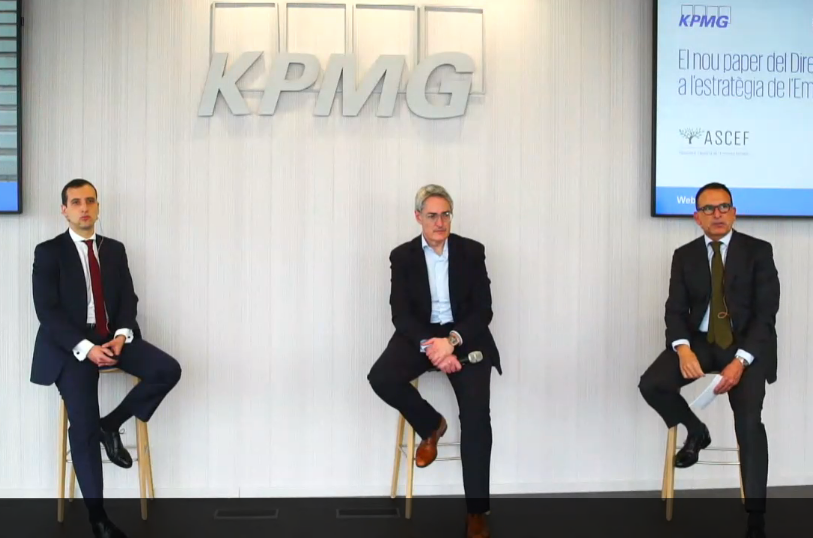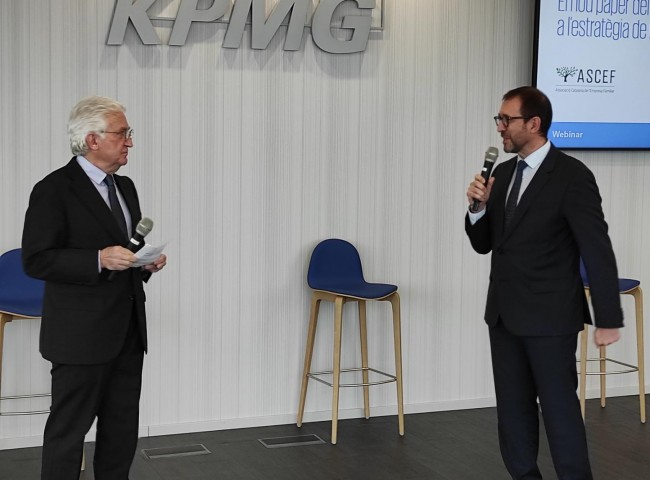“The Chief Financial Officer is becoming a standard and a backbone for the family business strategy”

In the current context, the Chief Financial Officer (CFO) figure is taking on a new role within the family business having a direct impact on decision making about implementing a strategy. This new role was the focus of the session organized by the Catalonian Family Business (ASCEF) in collaboration with KPMG, called “The New Role of the Chief Financial Officer in the Family Business Strategy”.
During the welcoming address, ASCEF‘s President, Amadeu Jori underscored the importance of a customized financial department embodied in the figure of its leader: “The Chief Financial Officer is becoming a standard for the family business; finances are already a backbone for the company’s strategy“.
Throughout the session, Alfonso Junguitu, Eduard Pereira and Fernando Ramos, associates and director respectively from KPMG’s Turnaround, Transformation & Working Capital Department, explained how and why the Chief Financial Officer, beyond their traditional role, is assuming a new role as the CEO’s ally when making decisions on strategy implementation.
Fernando Ramos reminded that the CFO “is a figure that always gains size in time of crisis, since he knows the strategy and knows how to calibrate liquidity“, who, in the current context and circumstances, is someone who “takes into account the lessons learned from the previous crisis, which help today’s companies be more resilient.”

“It is important that the Chief Financial Office gets involved in what it is being done and may be able to take part in decision making about all areas and departments“, explained Alfonso Junguitu, who noted that “the cashier is not something intangible.”
Meanwhile, Eduard Pereira stated during the session that “it is important to be able to be more efficient in management,” for which the CFO figure is essential. “At an operative level, the Chief Financial Officer has an impact on 4 spheres: demand forecast, stock management, production planning and production management,” revealed Pereira, who afterwards proposed different financial solutions for each of the spheres.
However, in most cases the solution involves a transformation plan for which “there is no unique recipe, but that needs to be adapted to each case” while following 5 key points: revisit mid to long term strategies, evaluate talent, completely reassess cost structures, resilience in supply chains and capital structure. Just as Junguitu highlighted, these changes in the company “need to be sped up by the CFO, since he knows the strategy using liquidity and turnover control and preparing for different temporary scenarios.”
Wrapping up were Joan Griñó and Fernando Pérez, Corporación Griñó‘s CEO and Chief Financial Officer respectively, who explained the company’s experience at integrating financial teams in order to reach a strategy.